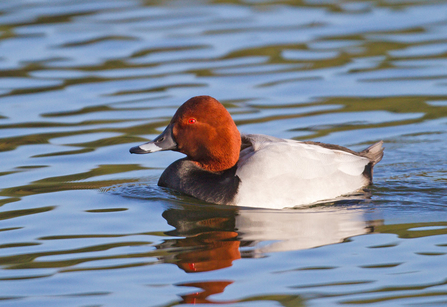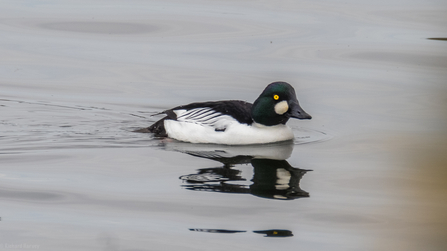In this blog we are going to take a closer look at diving ducks. These ducks dive underwater to find food in our lakes.
tufted duck.
Dressed up as if off out to a black-tie dinner, the smart males have a purplish sheen to their black head. The females are chocolatey-brown with a paler panel on their sides. The call of the female is a chick-like cheeping and in response the male utters a harsh grating call, a bit like the ‘caw’ of a crow if you can recall these. Tufted ducks, or ‘tufties’ as they are affectionately known, are deep-diving ducks capable of swimming to depths of six metres in search of food!
Did you know… Tufted ducks usually live for about 4 years, but the oldest bird on record was 24 years, 3 months and 13 days!



